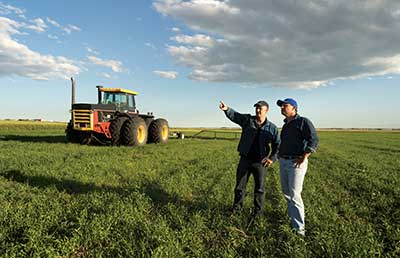
In times of change, focus on what you can control. Spend the time and resources to put together a solid plan and move forward.
If we can be certain about anything recently, it is that there will be a lot of uncertainty for the foreseeable future when it comes to commodity prices and legislation. It wasn’t that long ago that corn went from $7 a bushel in 2012 to below $3 in Fall 2014. At that same time, the Agricultural Act of 2014 was passed, which included new price support programs, such as Agricultural Risk Coverage (ARC) or Price Loss Coverage (PLC), and ended direct subsidies, which paid farmers whether or not they actually grew any crops. The programs were cheered when they rolled out, but have since become less effective as the base acre payments have steadily declined (or are non-existent) due to continually low commodity prices.
Most recently in 2017, the Trump Administration presented a tax plan that may repeal critical tax deductions used by many in agriculture, the domestic production activities deduction (DPAD), and many other changes. With the wild swings agricultural markets have seen in the last five years, it may seem difficult to plan for the future. My advice is simple: know who you are.
Get back to the basics of agricultural operations
To best navigate these uncertain times, focus on controlling what you can control — your operation. This will require you to ask some questions about your organization and come up with reasonable answers. The following questions are a good place to start.
- What is your business plan and what are the goals of the farm?
- Does your organizational structure support the goals of the farm?
- Are the key members of the organization (i.e., current management, future management, and non-farming family members) clear on how a future transition will work?
- What tools does your operation have available to hedge risk?
- Crop insurance
- Crop price support programs
- Grain marketing contracts and futures accounts
- Diversification through livestock or crops
- Do you have the ability to generate accurate financial statements, cash forecasts, and costs of production models?
Understanding your business and how changes in regulation, commodity prices, and other variables will affect your organization will position you to adapt quickly and productively.
Develop a business plan
I am often surprised when I ask a producer, “What is your plan?” This simple question is frequently hard to answer. But without a business plan and goals for the farming operation, you don’t know if the decisions you are making on a daily basis are helping you get to where you want to go. In fact, you may not even know where you want to go.
Producers must understand how their current organization structure allows them to do what they want to do. A producer may want to transition the farm to a son or daughter, but should also keep in mind the tax implications. Currently, the most popular entity structure is an LLC, but, depending on the goals of the operation, a C or S-corporation may make more sense.
However, what may “make more sense” to the current owners may not make sense to those who intend to take over the farm. Current management must clearly communicate their thoughts and visions of the operation to their successors, and listen to what the successors think of that plan. A thoughtful business plan that is communicated to all stakeholders will provide a roadmap for the short-term operations as well as a concrete plan (and business structure) to transition the responsibilities of the business.
Risk management tools
Risk management tools can offer producers some sense of security. From price-risk insurance to crop insurance and grain contracting, producers should work through the numbers and understand how their insurance premiums compare to the assets at risk. Not all acres are likely to bear the same risk when it comes to productivity. Consider which acres should or shouldn’t be entered into insurance programs. When it comes to grain marketing, consider if you have the volume necessary to make option contracts and futures reasonable hedges, given the higher cost of these hedging instruments. When it comes to risk management tools, the most important thing to remember is, if you don’t completely understand the tool you are using, it is ineffective and can get you into financial trouble in a hurry.
Accurate financial statements
Lastly, and arguably most importantly, being able to produce accurate financial statements and forecast cash flows will help you make informed and better financial decisions. Accurate financial statements and cash flow forecasting allows producers to understand debt-servicing costs if they need additional capital from lenders. It also allows them to do tax planning more strategically. Overall, it helps producers understand the financial impacts of their business decisions.
By knowing costs of production and having the ability to generate financial statements, producers also have the ability to perform their own “stress tests.” For example, a producer could see the financial impact of corn yields falling 25 bushels per acre and prices declining $0.50 per bushel. This tells a producer how much loss the operation can handle before it needs additional capital. Your lenders will appreciate you having this conversation with them upfront, instead of in the middle of a crisis.
How we can help
With so many things changing in agriculture and the economy, it is important to focus on what you can control and stop worrying about what you cannot control. Spend the time and resources on putting together a solid plan and business structure now, so you know how to react when changes come later.
